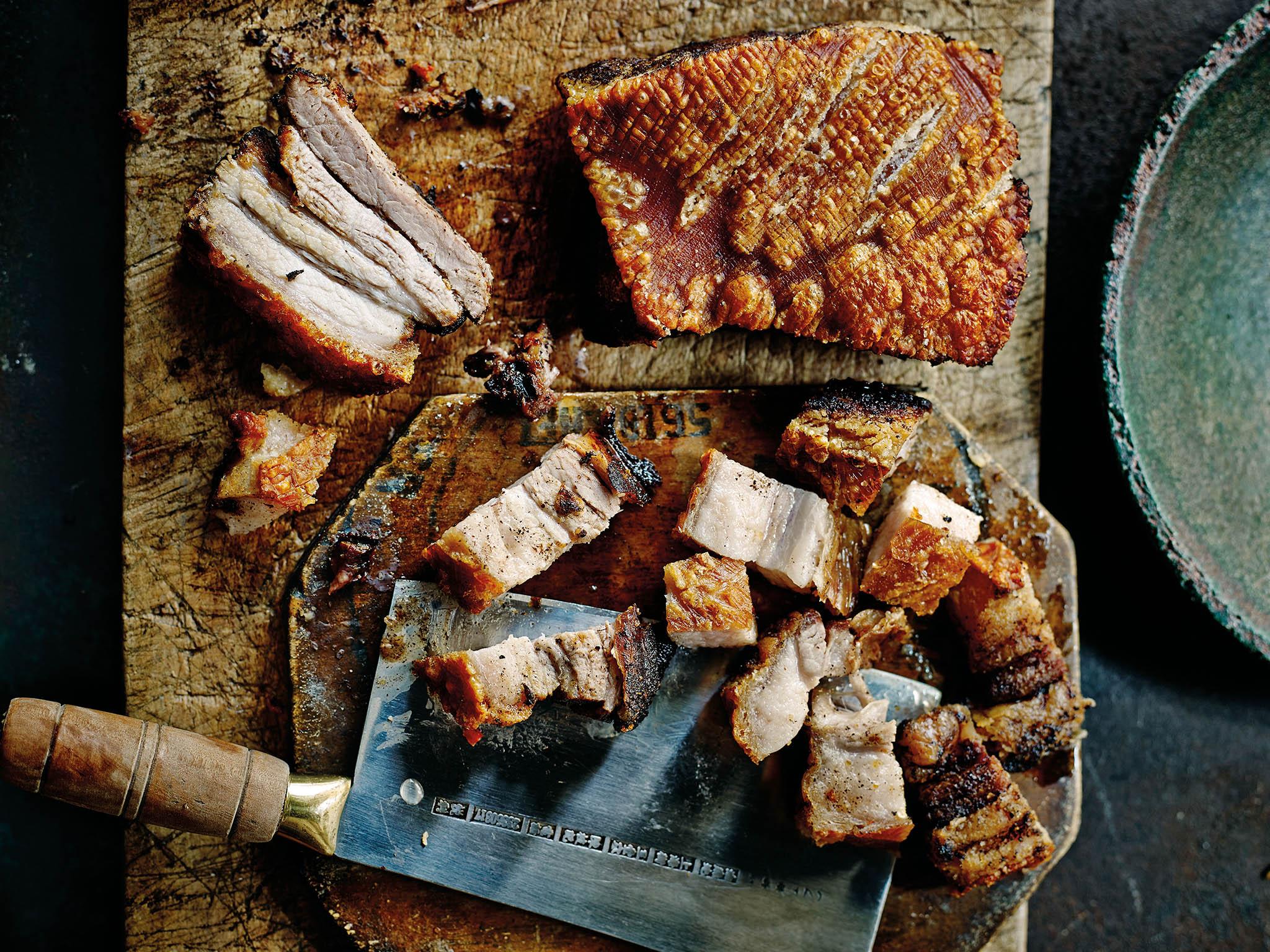Chinese New Year 2018: What it means to chef Jeremy Pang
Celebrate 16 February, the year of the earth dog, with Jeremy Pang's favourite recipe, slow-cooked five-spice pork belly to crunch your way into a prosperous new year

Your support helps us to tell the story
From reproductive rights to climate change to Big Tech, The Independent is on the ground when the story is developing. Whether it's investigating the financials of Elon Musk's pro-Trump PAC or producing our latest documentary, 'The A Word', which shines a light on the American women fighting for reproductive rights, we know how important it is to parse out the facts from the messaging.
At such a critical moment in US history, we need reporters on the ground. Your donation allows us to keep sending journalists to speak to both sides of the story.
The Independent is trusted by Americans across the entire political spectrum. And unlike many other quality news outlets, we choose not to lock Americans out of our reporting and analysis with paywalls. We believe quality journalism should be available to everyone, paid for by those who can afford it.
Your support makes all the difference.My Dad’s favourite Chinese New Year dish
Growing up in the Pang household there was always one telltale dish that when it was cooked, meant something special or important was happening; crispy pork belly. If my sisters and I spotted Dad or Mum cooking it, or smelt it simmering away in the oven, we always knew family was coming round and we better be on our very best and most gracious behaviour.

As we round the corner into February we come into the most auspicious time of the year in Chinese culture; Lunar festival or Chinese New Year.
While the UK tends to only recognise it as a one-day holiday, it is a time of year where businesses all over China shut down for up to two weeks, the actual length of the celebration, and families gather for some uninterrupted time together.
For some it is the only time of year they are able to do so, so the food that is shared during this time of year is special, requiring that much more thought and care.
Imagine, golden crispy stuffed wontons, rich lobster noodles, freshly blanched spring greens, a whole steamed sea bass with crushed soy beans, and of course succulent pork belly, all sat atop a table as loved ones gather round it to eat and enjoy each others company, wishing each other health, wealth and the utmost success for the year to come. Chinese New Year is truly a time for food, family, and well wishes, all in absolute abundance.
Symbolic eating
Chinese culture incorporates symbolism and meaning into everyday life, from how to behave at the dinner table, to what colour to wear on what occasion to what numbers are considered lucky. But especially during Chinese New Year, symbolism and significance is at its peak, especially when it comes to what is cooked and eaten. Traditional Chinese New Year dishes include wontons, folded specially into ‘gold ingot’ shapes to signify good wealth and prosperity, spring greens; renewal, long uncut noodles; a long life, a whole fish; abundance and unity, and pork belly; to crunch your way into a prosperous new year. By sharing these dishes at the table, you are not only hoping for these benefits yourself, but more importantly wishing them for friends and family.
Crowd pleasing pork
With the spirit of celebration and generosity in mind, Chinese New Year is a time to serve show-stopping food to the people who matter most.
One such dish that always appears on my family’s table is a five spice infused pork belly, my dad’s very favourite dish.
Not only does it convey the wish of a rich life to those seated around your table, but it is a wonderful way to elevate the meal, giving your guests a bit of extra love and care, as they tuck into succulent belly with a deeply satisfying moreishly crunchy crackling.
It’s quite the showstopper and deceptively simple to make, perfect for entertaining at any time of year. Who says you can’t serve it alongside some roast potatoes and greens for a truly remarkable Sunday lunch?
And of course Chinese New Year celebration isn’t complete without the gift of a red envelope, normally given to children by their elders and containing money, symbolising the wish of good wealth and fortune for the future.
Chinese New Year is a wonderful time of year to gather, cook, share and enjoy each others company no matter what dishes you choose to put on your table.
Crispy pork belly recipe by Jeremy Pang
If there’s one dish that brings together my extended family, it’s this. A celebration doesn’t feel right without it – so much so that a roast pig has made an appearance at the last two consecutive Pang weddings. In the last few days of my father’s life he could barely even string a sentence together, yet he still managed to request a meal of crispy pork and rice, and smiled at the thought of it. The blanching process and initial slow cooking here will help to get rid of the many solid impurities and excess fat that pork seems to hold in its skin while also softening the meat.
Prep: 15 minutes
Cook: 3 hours
Serves 4
1 x 500g pork belly piece
2 teaspoons salt
1–2 teaspoons Chinese five-spice
Place the pork belly piece skin-side down in a large saucepan and cover with boiling water. Bring to a boil, then reduce to a simmer and cook for 5 minutes before removing the meat from the pan. (Some scum may form on the top of the water; it is just some of the impurities and excess fat the pork holds within its skin and will be discarded once the pork is blanched.)
Remove the meat from the pan and run under cold water to cool. Once cool, pat the skin dry with kitchen paper and score gently using the tip of a sharp knife in diagonal ‘criss-cross’ cuts along the top of the skin, trying to only open up the fat and not cut into the meat itself.
Dry the skin with kitchen paper once more and rub the salt into it. Rub the five-spice onto the sides and bottom of the meat only, not the skin.
Preheat the oven to 130°C/265°F/Gas ¾. Place the pork on a wire rack above a roasting tin skin-side up and roast in the oven for 1½ hours. Now turn the oven up to 230°C/450°F/Gas 8 and roast for a further 30–45 minutes, or until the skin is golden brown and crispy all the way through. To judge whether the pork skin is crispy enough, give it a flick with your finger; if the sound is hollow like that from the bottom of a well-baked loaf of bread, then the pork is definitely crispy enough.
Remove the pork from the oven and allow to rest for 15 minutes. Turn the pork skin-side down on a chopping board and slice through the skin with a sharp large knife or cleaver, pressing down on the top of the blade to slice through the crackling. Serve.
TIP: If you do not have a fan function on your oven, leave the pork out to dry in a cool, dry area of your kitchen for 1 hour before placing in the oven.
Recipe from Chinese Unchopped by Jeremy Pang. Published by Quadrille (£20), photography by Martin Poole; Jeremy Pang runs The School of Wok (schoolofwok.co.uk)
Join our commenting forum
Join thought-provoking conversations, follow other Independent readers and see their replies
Comments